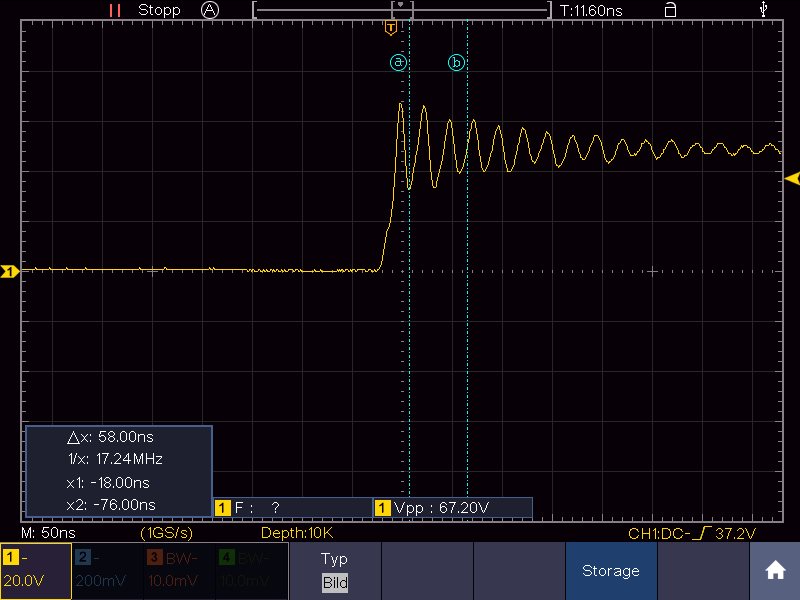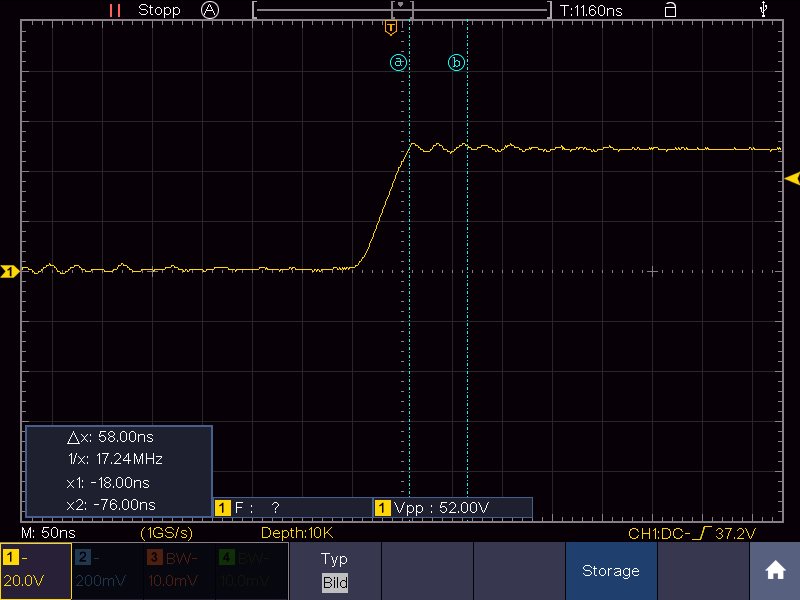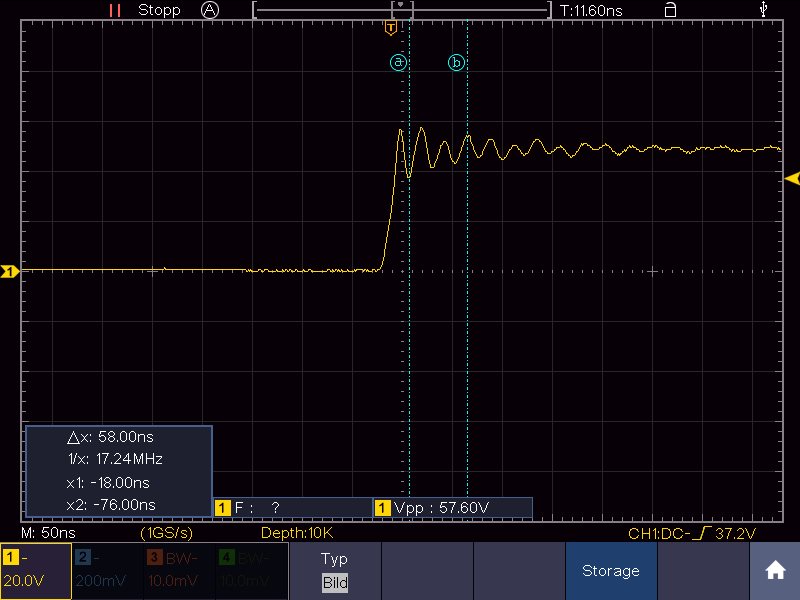Hello all!
I am working on a hardware which should control a brushless DC-motor using FOC. The exact component name of the motor-driver we are using is DRV8323SRTAR. The microcontroller which is responsible for controlling and calculating all the FOC-related stuff is the TMS320F28027FPTQ.
Now we got the problem that the DRV8323 died already 3 times and a seperate microcontroller and a CAN-transceiver also did one time but currently we do not really know why . From this point we began searching for the reason which constantly kills this chip and came across some weird oscillations on the gates of the half-bridges for the output. These oscillations occur on every of the phases and on every MOSFET (low- and high-side). The configuration of the chips is the default config except the CSA_GAIN is set to 5VpV and the reference voltage divider VREF_DIV was set to 1. We are using a 3-axis PWM with a frequency of 15kHz.
Below you can see the schematic of one phase, the other two are completely the same:
This schematic is basically build like the reference-circuit provided in the datasheet of the DRV8323. The pins GHx and GLx look like the following (captured only the falling edge, but the rising edges look pretty the same, if you need the scopes of the rising edges to, just tell me):
GH1 falling edge
GL1 falling edge
What's also pretty interesting is, that the ripples also occur on the actual output (X600 and MP600) altough no motor is connected. If no motor is connected, the three phases look all nearly the same (see below):
X600 for phase 1
If I connect the motor to the three phases they look completely different. The first phase has the biggest oscillation/overshoot on it, the second one is nearly perfect with no overshoot/oscillation and the third one is somewhere between the first and second one:
phase 1 with motor
phase 2 with motor
phase 3 with motor
Considering all the figures above, we assume that the high voltage-peaks could kill the DRV8323 and also go across the PCB and kill other ICs.
Does this make sense? And has anybody an idea what we are doing wrong?
Thank you in advance!
Best regards,
Nikolaus







